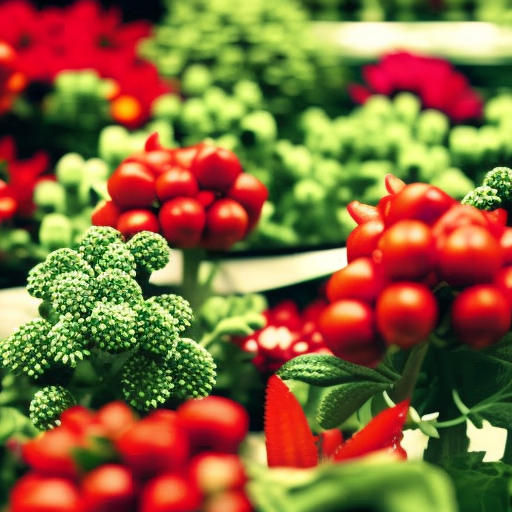Summary:
Plant physiology is the study of how plants function and respond to their environment. It encompasses various processes such as photosynthesis, respiration, water and nutrient uptake, growth, and development. Understanding plant physiology is crucial for improving crop yield, developing sustainable agricultural practices, and mitigating the effects of climate change.
Photosynthesis:
Photosynthesis is the process by which plants convert sunlight, carbon dioxide, and water into glucose and oxygen. It occurs in the chloroplasts, which contain the pigment chlorophyll. During photosynthesis, light energy is absorbed by chlorophyll, which then drives the synthesis of glucose. Oxygen is released as a byproduct. This process is essential for the production of food and oxygen on Earth.
Respiration:
Respiration is the process by which plants break down glucose to release energy for growth, reproduction, and other metabolic activities. It occurs in the mitochondria of plant cells. During respiration, glucose is oxidized, releasing carbon dioxide and water. This process is similar to respiration in animals but occurs at a slower rate in plants.
Water and Nutrient Uptake:
Plants require water and nutrients for their growth and survival. Water is absorbed by the roots through a process called osmosis. The movement of water within the plant is facilitated by specialized tissues called xylem and phloem. Xylem transports water and minerals from the roots to the leaves, while phloem transports sugars and other organic compounds throughout the plant.
Growth and Development:
Plants exhibit various growth and developmental processes throughout their life cycle. These include seed germination, root and shoot growth, flowering, and fruit production. Plant growth is regulated by hormones such as auxins, gibberellins, cytokinins, abscisic acid, and ethylene. These hormones control cell division, elongation, and differentiation, as well as responses to environmental stimuli.
Environmental Responses:
Plants have the ability to respond to changes in their environment. They can sense and respond to light, gravity, temperature, and other stimuli. Phototropism is the growth response of plants towards or away from light. Gravitropism is the response of plants to gravity, causing roots to grow downwards and shoots to grow upwards. Plants can also respond to temperature changes through processes such as vernalization and photoperiodism.
Stress Responses:
Plants face various environmental stresses such as drought, salinity, extreme temperatures, and pathogens. They have developed mechanisms to cope with these stresses. For example, plants can close their stomata to reduce water loss during drought conditions. They can also produce defense compounds to protect themselves from pathogens and pests. Understanding these stress responses is crucial for developing resilient and stress-tolerant crops.
Plant-Environment Interactions:
Plants interact with their environment in complex ways. They can modify their surroundings through processes such as root exudation, which releases compounds that influence soil microbial communities. Plants also interact with other organisms, such as pollinators and herbivores. These interactions play a crucial role in ecosystem dynamics and biodiversity.
Applications:
Understanding plant physiology has numerous practical applications. It helps in improving crop yield and quality through the development of better agricultural practices, such as optimized irrigation and fertilizer use. Plant physiology also plays a role in plant breeding and genetic engineering, allowing the development of crops with improved traits, such as disease resistance and increased nutrient content. Additionally, studying plant physiology is essential for understanding the impacts of climate change on plant growth and productivity.
In conclusion, plant physiology is a multidisciplinary field that explores the various processes and mechanisms by which plants function and respond to their environment. It is crucial for improving agricultural practices, developing stress-tolerant crops, and understanding the impacts of climate change on plant ecosystems.












